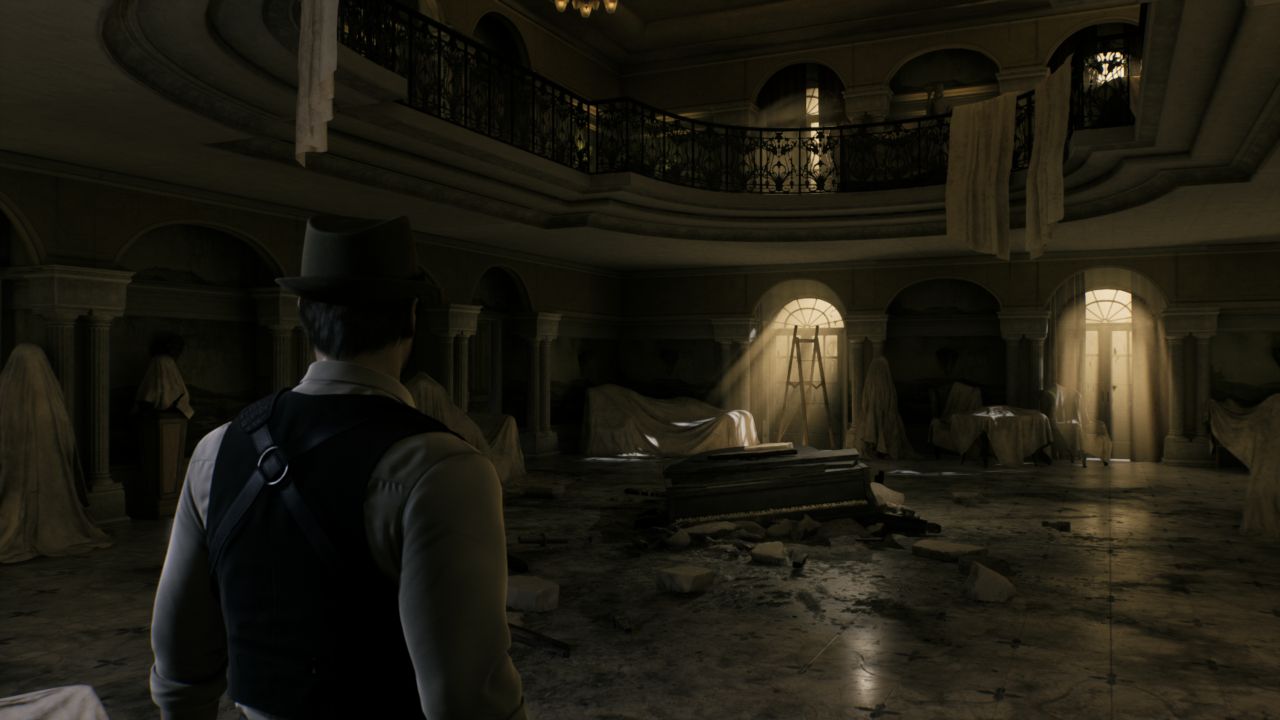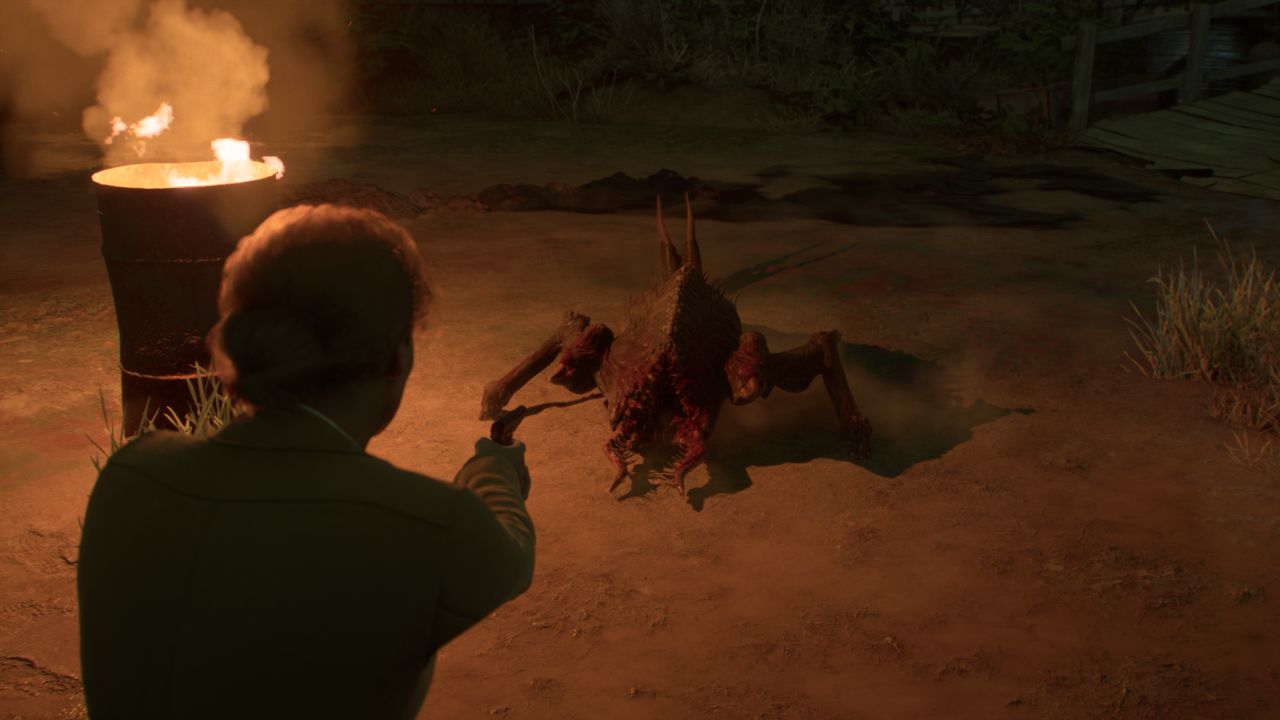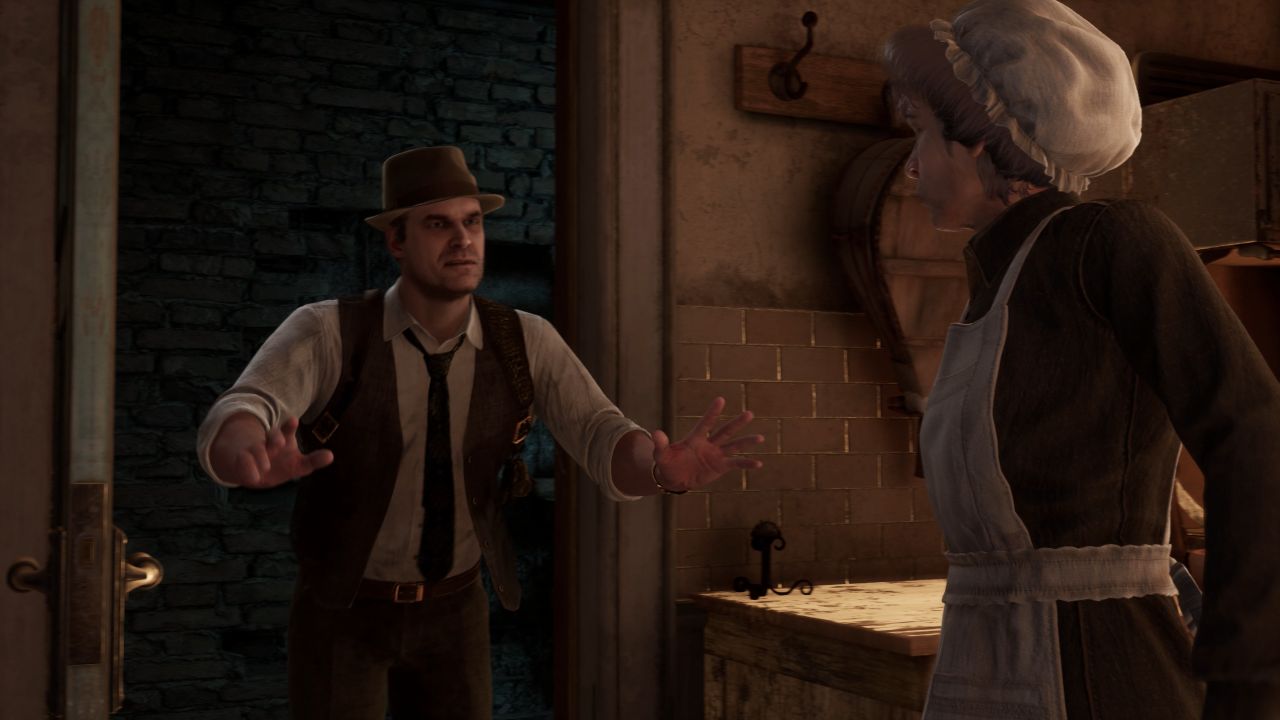Alone in the Dark Review
An unsatisfying return of a classic horror adventure series
Although familiar with the name, Alone in the Dark is a franchise that peaked before my time. The glory days of the series came before I was of age to play them, with the original trilogy releasing on PC in the early 1990s. This, unfortunately, means that my experiences with the series come from the lackluster remake released in 2008, and the somehow worse Uwe Boll-directed film from 2005. And few will care to remember Alone in the Dark: Illumination from 2015. Which bums me out, because as a survival horror fan, I've read how influential the franchise was to the genre in its heyday. Without it, who knows if the likes of Resident Evil or Silent Hill would have turned out as well as they did? Not getting to experience the highs of Alone in the Dark in 1992 is part of why I was so intrigued by this latest reimagining of the first game. A chance to delve into the narrative of the original classic but rebuilt using modern elements of the genre.

Set during the 1920's, Alone in the Dark centers around the disappearance of Jeremy Hartwood. Distressed by a recent letter received from her uncle, Emily Hartwood travels to Derceto Manor along with private investigator Edward Carnby. A home for the mentally fatigued, Derceto Manor was the last known location of Jeremy, but now the denizens of the asylum claim to have no idea where he has gone off to. With the inpatients and staff of the manor providing little help, it will be up to Emily and Edward to piece together both what has caused Jeremy's mental break, as well as what his current whereabouts. What they will discover, though, is that the roots of his illness run deep within the asylum.
Taking a page from Resident Evil 2, Alone in the Dark allows players to control either Emily or Edward. While the story mostly follows the same beats regardless of who you pick, there are differences between the two. Interactions with the residents of Derceto are different, and both characters have backstories that flesh out their respective histories. There's no conversation system for when you interact with the other characters, but what they reveal and how they react to you are different depending on who you are playing as. Having played through both perspectives, I ultimately found Emily's version the strongest overall. I thought it did a better job of explaining what's going on at the manor, and the segment focusing on her loss hit harder than Edward's past tragedy. It took me around 8 hours a piece to complete each version, so I would still recommend completing both, if only to get the full picture.
Overall, though, I found the narrative to be fine, if a little underwhelming. I'll admit I had higher expectations for it due to it being written by Mikael Hedberg, the scribe responsible for the excellent Soma. Alone in the Dark lacks the existential dread of that title, trading it away in favor of a mix of noir tropes and gothic/cosmic horror. The few jump scares you get are poorly telegraphed, and the big villain haunting Jeremy lacks menace. I never felt scared exploring the manor, which is not ideal for a horror game. And while the search for Jeremy brings you to some interesting locales, I struggled to get truly hooked by the mystery. There's also a distinct lack of character interaction between the leads when their paths cross. From what I can tell, this is a purposeful call-back to the original game, but I still found it to be odd. If you didn't see them driving up to the mansion together at the start of the game, you would have no idea they were even working together.

Your time on the bayous of Louisiana in this third-person adventure will largely be spent looking around for information and solving intricate puzzles. The most important tool you get is Jeremy's mystical talisman. By inputting specific three-digit numbers, you can utilize this artifact to travel to different locations outside of the mansion. Exploring these areas is key to solving the mysteries at the heart of the game. Other puzzles throughout the game require you to look back on different documents and notes you have found, as well as using context clues within the environment. One type of puzzle sees you cross-referencing a Zodiac chart with a painting to draw out a specific number combination. Another has you piecing together a specific image from pieces of a broken plate. I found these to be the strongest aspects of the package here. The puzzles require you to put in a good amount of work, but the solutions don't feel unearned or random.
On the other end of the spectrum, about a quarter of gameplay runtime is devoted to combat, the weakest part of the experience. As you explore the manor and other locations, you'll be besieged by the likes of goopy moss-covered monsters and skittering bug-like beasts. Creatures conjured by The Dark One to keep you from finding out the truth about Jeremy. Both Edward and Emily utilize the same arsenal, which includes three firearms (pistol, shotgun, machinegun), the ability to throw smaller objects (bottles, bricks) and pick-up blunt objects (debris, oars) to smack around enemies with. There are only a handful of enemy types, they are annoyingly bullet-spongy, and have no strategy other than running directly at you. The gunplay feels fine enough, and while ammo isn't plentiful, I felt comfortable with the amount I found throughout the campaign. It's not challenging, but it is clumsy and awkward. Swinging an axe or any other kind of blunt instrument never felt right, and it's easy to get turned around and out of place while attempting an attack. Throwing objects could have been better implemented, as your options are to either quick throw it with the press of a button, or hold onto it until you want to use it. However, you don't put the object away, but rather walk around with it in-hand. A baffling choice that only serves to slow the player down and obscure the camera. It's fortunate that combat takes a backseat in the game, but you still have to deal with segments focused on it.
Something that makes exploring Derceto Manor interesting is the clear level of care that went into designing it. From the uniquely structured patient rooms to the disgusting rot seeping its way into the foundation, there's plenty of good ground to cover. It makes the constant moving back and forth from one area to another not feel as stagnant as it could have been. A majority of your time is spent exploring the manor grounds, which was a smart choice. The other locations you visit via talisman offer a respite from the estate, but don't feel as well crafted. Trips to a steamboat tangled up in rot or a sprawling ancient library end up coming off as wasted opportunities. They lack the attention to detail of the main setting. Neat ideas for sure, but the execution wasn't fully there.

A lot has been made in the marketing materials about the presence of stars Jodie Comer and David Harbour lending their likenesses and voices to the main characters. But their inclusion ends up being a mixed bag. Their character models look great, and the developers did a good job of depicting their facial features. However, the voice performances from both aren't great. Simply put, it doesn't sound like they put full effort into their dialogue, with a lot of flat deliveries that don't match the respective intense story beats. Neither have done much voice work in the past, and perhaps it shows.
Unfortunately, despite being delayed multiple times, Alone in the Dark still features a litany of bugs and glitches at launch. I had multiple hard crashes across both campaigns on Xbox Series X. Thankfully, the title has a generous autosave, but it's still not a fun issue to deal with. I also noticed multiple moments of lag and framerate drops. This is most noticeable when opening a door to a new area or dealing with several enemies at once. There's also a weird sound issue where the sound of gunfire plays a beat or so after the weapon was clearly fired. There is a day one patch in the works, and I hope it clears up these issues. Going off what I have in front of me, though, it could have used some additional polishing.
While it may not be the worst reboot the series has received, Alone in the Dark of 2024 is still a disappointing return, and pales in comparison to the other horror franchises getting reinvigorated in the past few years. The lead voice acting is dull, the combat is clunky and uninspired, and the central mystery fails to provide intrigue. Combine all that with bad technical performance, and you end up with a bayou-set bummer. And it's frustrating because you can see the roots of something special. You've got some puzzles that are cleverly designed, and a creepy, well-crafted setting. There's untapped potential within the franchise, and it's disappointing that even a remake couldn't re-capture the magic of the original. I just hope it doesn't take another decade for someone to take a stab at uncovering it.
 Comments
Comments















